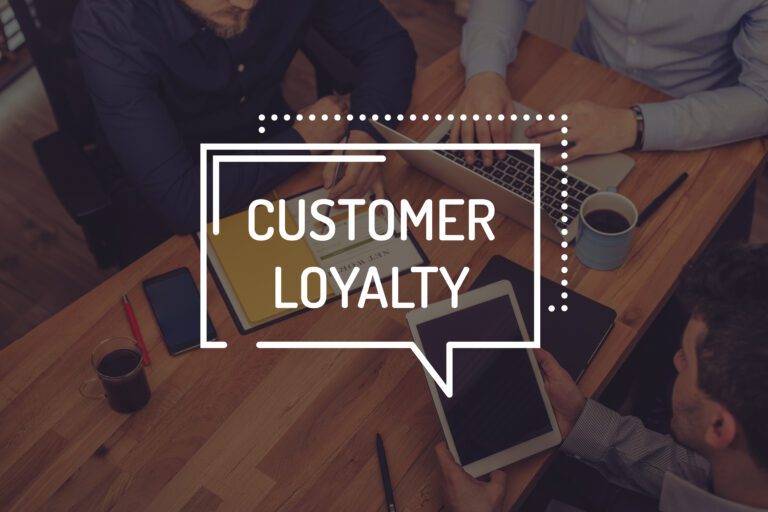March 22, 2021
The State of Loyalty Across Generations

With the rise in competition for market share, the customer journey has become the leading marketing strategy. Before a purchase is even made, most customers strongly consider the reason for their investment, whom they want to shop with, and how businesses communicate with them.
As national and local brands rise to meet consumers’ expectations of simplicity and convenience, acquiring loyalty membership allows businesses to provide a curated marketing journey. It’s more important than ever to create a streamlined experience for customers of all ages and demographics to cultivate and grow a loyal audience.
In this report, we differentiate how marketing tactics affect the state of loyalty among different generations of consumers: Generation Z (19-21 years old), Millennials (22-37 years old), Gen X (38-52 years old), Baby Boomers (53-71), and the Silent Generation (72+). These insights will help marketers develop a successful loyalty strategy to drive a strong customer experience and empower brand loyalty, regardless of age or industry.
The Strength of Loyal Customers
Each generation differs in how they prefer to receive communication and maintain a relationship with brands. However, all generations can agree that convenience and a rewarding loyalty program are required to maintain that relationship. The success of these programs depends on how accessible and intuitive the shopping experience is for all consumer types.
Based on years of research through client and customer surveys, we’ve compiled a list of factors that influence how different customers determine the extent of their loyalty.
Prove your worth, or you may get cut.
Research has shown that 75% of customers utilize only up to three loyalty programs at a time, suggesting that customers tend to limit their program participation. This limitation forces brands to prove their worth by developing a simple, more convenient, and accessible purchasing experience.
Timing is everything.
It’s common for brands to struggle with finding the right cadence for communication with customers. It can be tricky to strike the balance between sharing too little or too much, and if a business fails to strike that balance, they may risk losing customers. However, once you find the right cadence, you can start tailoring content and messaging to improve retention and ROI.
Recognize Customer Impatience
Combining convenience and simplicity is a marketer’s best chance of gaining customer loyalty. A recent poll suggests that 26% of consumers say they don’t typically sign up for programs if the application process takes too long, or if they are required to provide more information than they are comfortable with. Another 22% reported that if it takes a lot of effort or purchases to start earning rewards, they are more likely to quit the program, if they sign up at all.
Loyalty Across Generations: Program Sign-Up Success
The best way for a brand to approach a customer to sign up for a loyalty program can differ on a generational level. However, 38% of customers of all ages prefer to be asked to join at checkout rather than upon arrival or in a follow-up email.
Points > One Time Discounts
Research shows that pricing plays the most significant role when customers are choosing where to shop. Brands can build a continuous relationship with their customers by giving them the chance to earn points, discounts, and rewards over time, rather than just implementing arbitrary values. In a recent report, 86% of customers say that they would utilize a points program.
The Landscape of Loyalty Across Generations
Because consumer preferences vary so much across different age groups, marketing strategy must also be crafted to cater to each generation. While broader trends span the generational gaps, key nuances are imperative to creating a tiered loyalty program for these distinct age groups.
Gen Z: Born 1997 – present: Teen – Mid 20’s
Gen Z is the first generation to grow up with mobile devices. They are the most tech-savvy of any age group, but that does not mean they are the easiest to target. Gen Z tends to be the most skeptical and conservative when giving out their personal information.
Loyalty programs can be a driving force behind Gen Z’s purchases. 85% reported belonging to three programs or less. Unlike other generations, the decision of which loyalty program a Gen Z chooses comes down to trust. They will only participate in a loyalty program if they know and trust that the brand will not abuse their provided personal information. They want brands to know who they are and their preferences, without being bombarded with various notifications. The most successful loyalty program to win over Gen Z is a personalized one. Minimal communication gives the consumer the power of preference.
Millennials: 1981-1996 / 39-24 years old
Millennials tend to have more specific spending priorities in place when it comes to purchasing; convenience, low prices, and perks are significant factors in their decisions.
For a Millennial to join a loyalty program, these stipulations must be met, starting with convenience and cost savings. Reports show that 28% of Millennials will join a loyalty program if a brand focuses on convenience. In comparison, 78% will join a loyalty program that provides consistent discounts and offers, the highest numbers of any age group.
Millennials are known to be the most price-conscious generation. Non-competitive product pricing and a lengthy sign-up process can potentially keep Millennials from joining a loyalty program. The most successful way to earn a Millennial’s trust is through providing value in point/reward-based programs and through positive customer reviews.
Millennials are driven by deals, making a points-based system more enticing. Programs like these provide value to their purchases and will ensure customer loyalty, but will also help keep them around, as they will want to earn additional offers. Additionally, by giving member-only perks, such as birthday/anniversary gifts and free shipping, brands can validate customer trust and increase retention.
Unlike older generations, Millennials can be persuaded by reading customer reviews. The power of other people’s opinions provides positive (or negative) reinforcement and validates the customer’s decision to complete the purchase.
Regarding channel preferences, most would assume that they’re on their phones most of the time, but the data indicates differently, especially when it comes to online shopping. 72% of Millennials reported using laptops and PCs, rather than mobile devices, to conduct product research and make purchases rather than mobile devices.
Gen X: 1965-1980 / 40-55 years old
Gen Xers are typically the group that marketers tend to forget to include. Not necessarily because they are not spending money, but because their spending potential is vastly underrated. Not only do they have more disposable income than their younger counterparts, but 51% of the generation claim to be actively participating in at least three or more loyalty programs.
Unlike Millennials, who are driven by rewards and points, Gen X prefers to participate based on value and quality. 31% have stated that product and service quality play the most prominent role when deciding whether to sign up for loyalty. Once Gen Xers have assessed the quality of their purchases from a particular brand, it doesn’t take much to get them to sign up for a program.
Gen X also does not favor one program over another. They are more open to participating in several loyalty programs at once, including rewards and point-system programs (38%), swipe cards (74%), store credit cards (45%), and membership-based programs.
Members of this generation can be the most loyal to a brand if the quality meets their requirements and allows for flexible spending. To keep them engaged, be diligent in communication frequency and provide multiple ways for them to shop and utilize your loyalty program.
Baby Boomers and the Silent Generation: 1946-1964 / 56-74 years old | 1925- 1945 / 78-95 years old
Baby Boomers and the Silent Generation share similar loyalty preferences as Gen X, but they also share similarities with younger generations. Product quality is vital to them, but they are also very cautious of their spending.
Marketers must also keep in mind that older generations are not as tech-savvy. Research shows that 54% still prefer in-store shopping experiences, and although some do shop online, most say that web platforms may be too confusing or complicated. Since the start of the COVID-19 pandemic, however, they’ve had no choice but to use these platforms, consistently selecting the most straightforward service to use.
To no surprise, Baby Boomers and Silent Generation cherish tradition. When choosing a loyalty program, they prefer the ones they are already familiar with: loyalty swipe cards, store credit cards, or co-branded credit cards. This keeps the older generations from participating in newer loyalty programs. Still, it is also because some of them do not have smartphones to utilize apps, QR codes, or other mobile rewards (52% of Baby Boomers and 79% of Silent Generation).
Of all the generations, these folks seek the least amount of brand interaction on digital platforms (Baby Boomers 50%, Silent Generation 59%). When asked why, they reported that they believed these channels were invasive and were afraid of sharing too much information. By sticking to traditional loyalty programs, avoiding complex technologies, and not asking for too much of their personal information, you may be able to keep their attention, ultimately gaining their loyalty and trust.
Share this:












